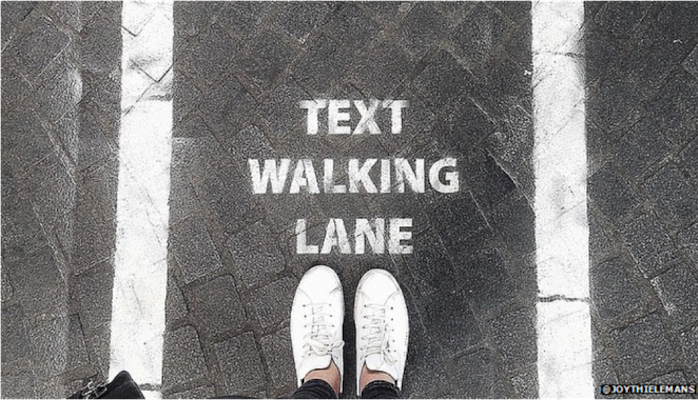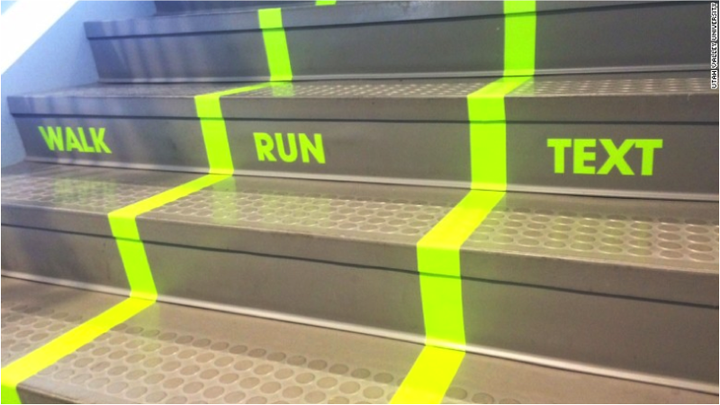
The curse of being stuck behind a slow walker might be classified as a first-world problem, but that doesn’t make it any less frustrating. There are many debates about the differences between shopping offline and online, but walking at a snail’s pace behind someone who is face down texting away on their smartphone can unlock the inner rage of even the most laid-back shoppers.
Across the pond in Liverpool, the city is proudly known for the song “You’ll never walk alone” yet ironically they have recently tested the UK’s first ever pedestrian fast lane after listening to feedback from consumers who expressed that their biggest bugbear was the zombie-like shuffle of their smartphone-addict fellow citizens.
Those on the lunch hour in any city across the globe will promptly declare that they’ll know exactly what they want and will plan a trip accordingly with military style precision. They know how to get in, complete their objective and be back at their desk with time to spare. However, very often than not they now find themselves battling through sidewalk hoggers and the social shoppers who are happily chatting away in the middle of stores completely oblivious of their surroundings.
With so many people paying more attention to their smartphone than their environment, are these slow and fast sidewalk lanes such a bad idea?
For those of you that blame those pesky kids for staring down at their phones all the time, you’d be surprised to learn that 69% of the 16 to 24 year-olds actually support the new lane initiative compared to just 37% of the over-55s.
Critics will quickly point out that in some parts of the world it’s actually encouraged for people to meet and converse with their friends in public spaces. This form of herding people removes any remaining community we are clinging onto and directly encourages a self-absorbed mentality that comprises of everyone just getting out of the way.
This is not a new idea. Text-walking lanes appeared in Antwerp earlier this year but were quickly tagged as a marketing stunt that broke Belgian law. However, experiments of express-sidewalk lanes were also tested in China and in Washington last year, but those that practiced the much-loved art of people watching thought that the outcome revealed unexpected results.
Many thought these new lanes would increase people’s self-awareness, and that when they saw a path for dawdling tech zombies, they’d put their smartphones away rather than be thought of as a slow walker. Of course, some pulled out their phone and took a photograph of these new lanes to share on social media that is to be expected in our digital world.

However, some noted that it stimulated conversation between pedestrians who happily started to talk to strangers discussing their thoughts on the changes to the sidewalk – something that could be construed as the recovery shoots for a rebuilding of the community spirit.
Whatever your opinion, it certainly acts as a wake-up call to stop looking down at our phones and sidewalks, or battling our way through crowds with only a care for ourselves. Maybe, we just need to slow things down a little and talk to those around us a little more. Is that such a crazy idea?
The truth is most of these reports or experiments were probably just publicity stunts. Even the slowest walking zombies we are trying in vain to avoid are often too busy staring down at their phones to even notice the stenciled fast or slow walking lane, but it has got us all talking again and is raising our dwindling self-awareness, and that’s not such a bad thing.
Just don’t get me started on slow walkers with umbrellas the size of a small home staring down a smartphone though. Some frustrations are best if avoided or given a very wide birth where possible.
